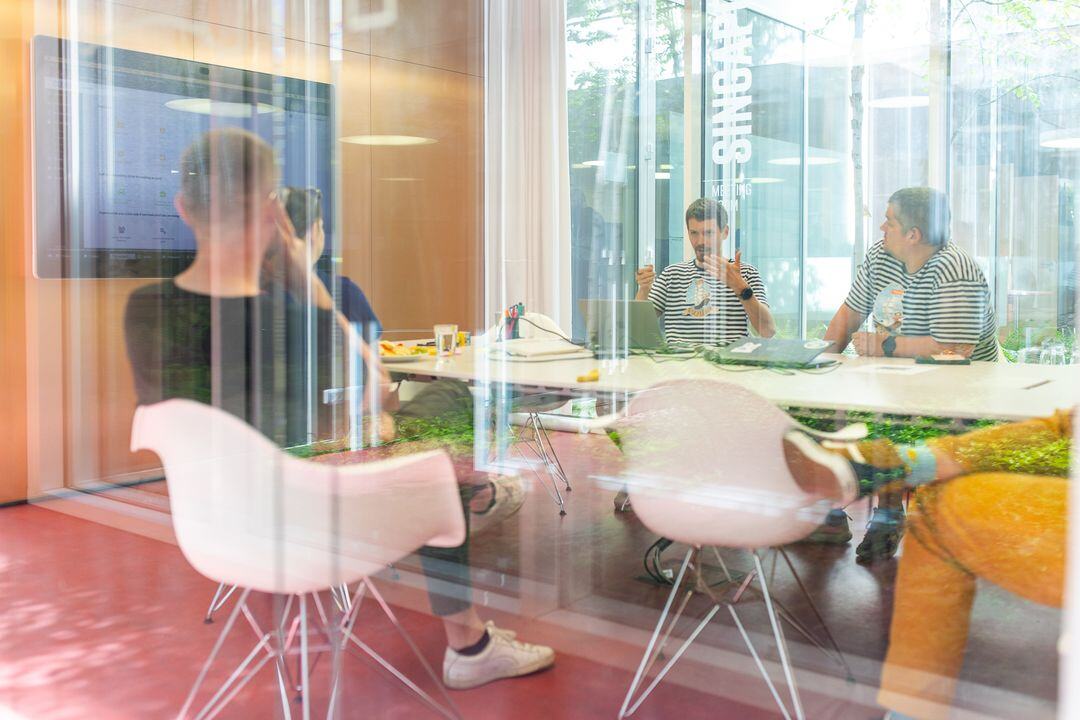The technology behind digital transformation takes many forms. One of them is the use of robotics. While many companies use robotics as part of completing tasks in manufacturing or in customer service (known as Robotic Process Automation), we are looking at robotics from a perspective of advancing the capabilities of quality assurance (QA) processes.
From repetitive verification tasks to more complex validation and ad hoc testing, robotics renew software testing, making it faster, more reliable, and better equipped to meet the demands of modern IoT and software ecosystems.
📖 Go deeper → How to Maximize Reliability in Software Testing
Robotics for Verification Testing
Verification testing ensures a feature works as specified. Robotics excels in these tasks because robots can operate without fatigue and with absolute consistency, reducing human error. A robot can simply test whether a feature works according to a specification or not.
Key Advantages:
- Repetitive Accuracy: Robots can perform repetitive actions like pressing buttons or toggling switches to test basic functionalities (e.g., turning a device on/off).
- Binary Results: Verification testing answers straightforward yes/no questions about a feature’s behavior.
- Improved Speed: Tasks that may take humans hours can be completed by robots in minutes.
Example: A robot tests the power button on a device to ensure it powers on, powers off, or performs other defined actions when pressed for a specified duration.

Robotics for Validation Testing
Validation testing goes beyond functionality to ensure that outcomes meet user needs or expectations. This involves more complex assessments like usability, response times, and real-world scenarios. The question is not whether something happened or not. Instead, it answers the question, “Was what happened expected and do the results meet user needs?”
How Robotics Enhances Validation Testing:
- AI-Powered Decision Making: With artificial intelligence (AI), robots can evaluate whether results align with user expectations.
- Computer Vision: Robots can recognize UI changes, locate icons in varying positions, and adapt to different layouts.
- Multi-Sensor Integration: Sensors like temperature, motion, or proximity add depth to testing, enabling simulations of real-world conditions.
Example: A robot using computer vision and AI validates whether a touch screen application launches successfully, even if the interface layout changes.
Combining Verification and Validation Testing
Combining verification and validation in a single robotic workflow is a game-changer for QA processes. This simultaneous approach:
- Speeds Up Feedback Loops: Developers receive faster and more actionable insights.
- Enhances Testing Depth: Robots test both whether a feature works and how effectively it performs.
- Handles Complexity: Ideal for intricate software and hardware systems where functionality and user experience intersect.
Example: A robotic system tests a printer’s hardware (verification) while simultaneously assessing its print speed and quality (validation).
Robotics for Ad Hoc Testing
Ad hoc testing is unstructured and exploratory, aiming to uncover unexpected bugs or system behaviors. Robotics brings a fresh perspective to this traditionally human-driven approach.
How Robotics Improves Ad Hoc Testing:
- AI Learning Capabilities: Robots can detect and adapt to unexpected outcomes, such as system crashes or prolonged load times.
- Continuous Testing: Robots can explore edge cases or random scenarios without predefined scripts.
- Automated Fail-State Handling: Robots recognize fail states, log errors, and either recover autonomously or alert developers.
Example: A robot explores random UI interactions on a newly launched app to identify unforeseen glitches.
Benefits of Robotics in Software Testing
Robotics offers significant advantages in software testing, transforming QA processes across industries.
Key Benefits:
- Increased Efficiency: Robots operate faster and more consistently than humans, speeding up testing cycles.
- Scalability: Robots can test multiple variables and scenarios simultaneously.
- Enhanced Accuracy: Eliminates human error in repetitive or complex tasks.
- Adaptability: AI and sensors enable robots to adjust to dynamic testing conditions.
- Cost-Effectiveness: Automation reduces the need for manual intervention, saving time and resources.
Applications in Real-World Scenarios
YSoft SAFEQ, a solution embedded in 2D and 3D printers, exemplifies how robotics supports robust QA processes. With evolving technology, YSoft utilizes robotics for:
- Robustness Testing: Ensuring durability in extreme conditions using temperature and motion sensors.
- Security Validation: Testing software vulnerabilities.
- Analytics: Providing data insights to improve performance.
Final Points
For a long time, we worked from the premise that, by integrating robotics into software testing, companies can achieve higher quality standards, reduce time-to-market, and stay ahead in an increasingly competitive tech landscape.
📖 Go deeper → The AIVA Testing Robot is Part of the Y Soft Team
While that’s not untrue, our experimentation has led us to the conclusion that AI and the cloud are what will truly allow us to help our customers modernize their testing ecosystem and let go of mundane, manual tests.
In 2024, we re-engineered AIVA to become a new breed of test automation, an AI-powered software platform that maximizes test reliability, streamlines testing, and minimizes maintenance even as you perform more comprehensive system tests.
Curious to see what AIVA can do? Join our user waitlist and become one of the first to experience how AIVA makes testing easy, reliable, and efficient.





